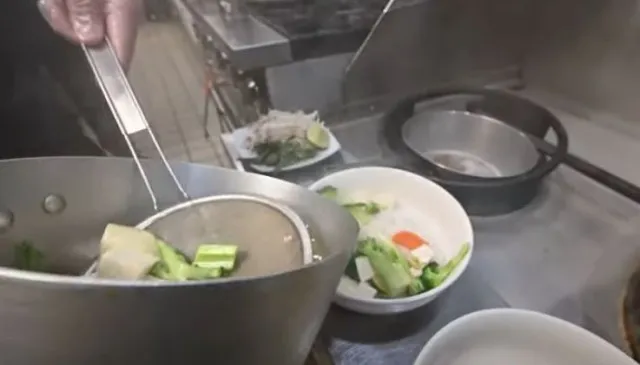In recent weeks, a new charge has been showing up on restaurant bills in Western New York, and it’s not sitting well with everyone. Known as the “kitchen appreciation fee,” this surcharge, typically around 3%, is intended to supplement the wages of kitchen staff who traditionally don’t receive tips. While some see it as a way to ensure fair compensation for back-of-house employees, others argue it’s an unnecessary and confusing burden for customers. The introduction of this fee has sparked heated debate both in dining rooms and on social media.

The kitchen appreciation fee is an additional charge that restaurants have started adding to customers’ bills. Averaging around 3%, the fee is designed to help bridge the wage gap between tipped front-of-house staff, like servers and bartenders, and kitchen staff, who typically don’t benefit from the same gratuities.
Restaurants are facing rising costs, from ingredients to labor, and rather than hiking menu prices directly—something many fear could drive customers away—they are opting for this alternative charge. The intention is to maintain customer satisfaction while ensuring kitchen employees are compensated fairly for their work.
While the intention behind the fee may be admirable, the kitchen appreciation fee has left many diners confused and frustrated. Here are a few reasons why this new charge is stirring up so much debate:
- Lack of Transparency: Many diners are unsure of what the fee is for and whether it is mandatory. This has led to a sense of awkwardness for customers who may feel pressured into paying the fee to avoid appearing stingy.
- Customer Perception: Some diners feel that the fee adds an additional layer of complexity to an already pricey dining experience. They argue that the fee should be included in menu prices rather than added as a surprise charge at the end of the meal.
- Social Media Backlash: On social media, the fee has become a lightning rod for criticism. While some support the idea of paying kitchen staff more, others see it as an unnecessary and confusing charge. Some users have even suggested that if this continues, other fees like “cleaners fee” or “dishwasher fee” may follow, further complicating dining bills.
The New York State Restaurant Association has defended the new charge, stating that it’s an attempt to balance rising operational costs with customer affordability. Melissa Fleischut, president of the association, explained that restaurants are in a tight spot, with costs soaring but customers growing increasingly price-sensitive.
“Our restaurant owners are really afraid of increasing prices so much that you stop coming out,” Fleischut said. The fee is seen as a way to boost wages without dramatically impacting menu prices, allowing restaurants to continue offering competitive pricing while supporting their staff.
Fleischut pointed out that in an era where consumers are already reluctant to pay more for meals, simply raising menu prices might deter business altogether. By introducing the kitchen appreciation fee, restaurants aim to maintain their current pricing structure while ensuring that their kitchen staff are fairly compensated.
Despite the good intentions behind the fee, many diners feel the charge is unfair or poorly communicated. Some argue that restaurants should simply increase kitchen wages without passing the burden onto customers. As one commenter on social media put it:

“Just pay your employees more instead of adding another line to the bill.”
Others have taken a more cynical view, suggesting that this could be the beginning of a series of extra charges tacked onto restaurant bills. Some joked that the next charges could include a “bathroom fee” or “ambiance fee,” sarcastically highlighting the absurdity of the situation.
Here are a few comments that have emerged in response to the fee:
- “This sounds like a Democrat thing… their goal is for everyone to be broke.”
- “I would have exact change, minus the kitchen fee, leave it at the cash register, and walk out!”
- “If I’m a great customer, not demanding, very appreciative, can I expect a discount on my meal? Does this go both ways?”
These comments capture the mix of confusion, frustration, and humor with which diners are approaching the kitchen appreciation fee. For many, the added charge seems like an unwelcome surprise in a time when dining out is already more expensive due to inflation and other rising costs.

One of the key issues highlighted by the debate surrounding the kitchen fee is the disparity in wages between front-of-house and back-of-house staff in the restaurant industry. Waiters and bartenders often earn more through tips, while kitchen staff rely solely on their hourly wages. This disparity has led to growing tension in the industry, as kitchen employees feel left behind in terms of compensation.
While tips are a major source of income for front-of-house workers, kitchen staff typically don’t share in those gratuities. As a result, the kitchen appreciation fee is viewed as a way to address this imbalance. However, diners are divided on whether this is the right solution, with some believing that the burden of fair wages shouldn’t fall on the customer.
As this new kitchen appreciation fee continues to make waves, it raises broader questions about wage equity in the restaurant industry. Should the responsibility of fairly compensating staff fall on customers, or should it be absorbed by the business? For some, the fee represents an innovative solution to a long-standing problem, while for others, it’s simply another confusing and unnecessary cost.

It remains to be seen whether this trend will spread to more restaurants or whether backlash will force changes in how restaurants manage their pricing and compensation models. But for now, the kitchen appreciation fee is a contentious issue that has diners talking—and not always in a positive way.
The kitchen appreciation fee has ignited a debate in the restaurant industry, highlighting the challenges of compensating all employees fairly without driving customers away with higher prices. While the fee aims to support kitchen staff, its reception has been mixed, with many diners expressing frustration over the lack of clarity and the added cost.
As more restaurants potentially adopt this fee, it’s clear that the conversation around fair wages in the industry is far from over. Whether this fee is a passing trend or becomes a permanent fixture on restaurant bills, it has already sparked important discussions about wage equity, customer responsibility, and the future of dining out.


